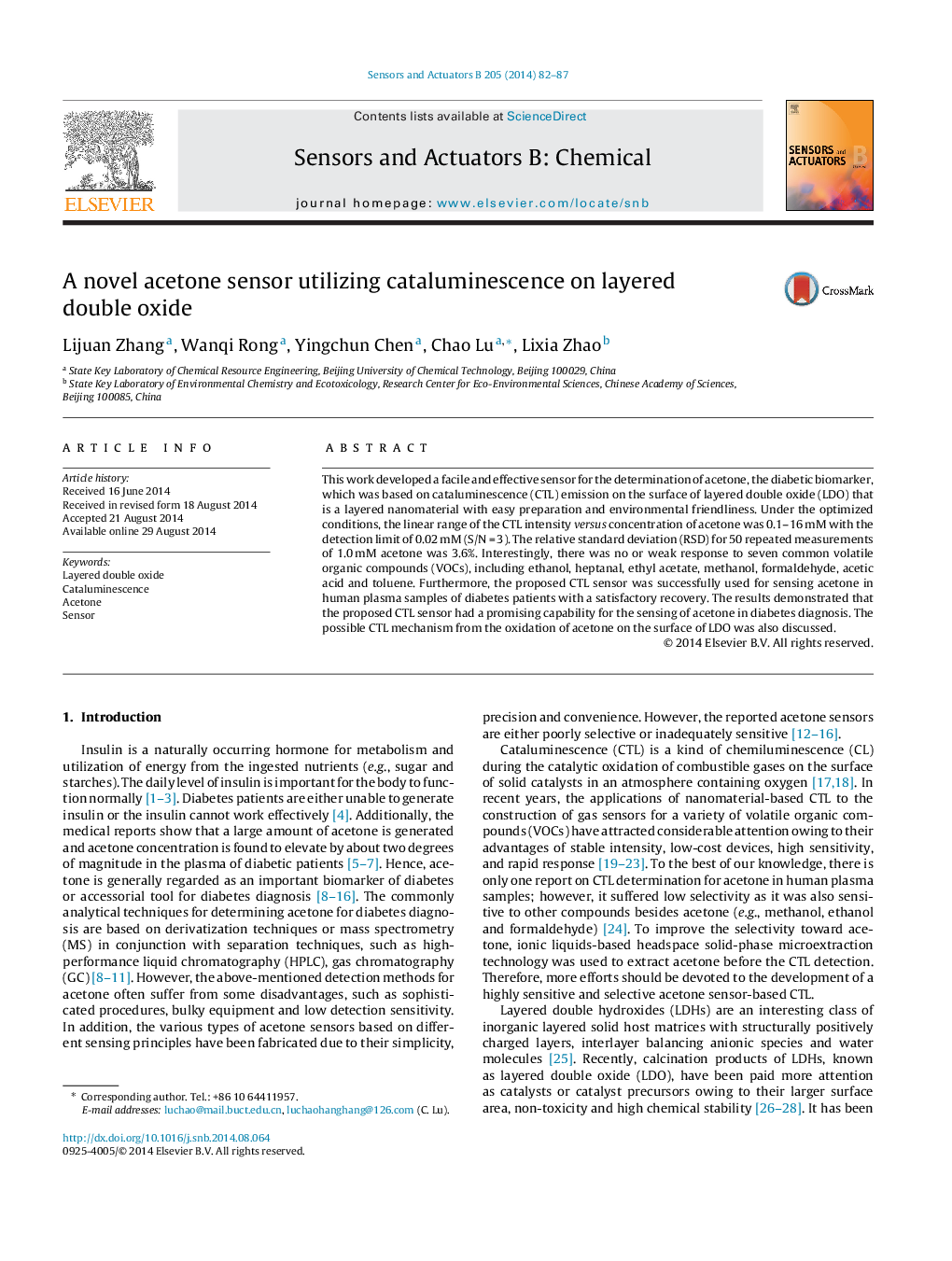| Article ID | Journal | Published Year | Pages | File Type |
|---|---|---|---|---|
| 739878 | Sensors and Actuators B: Chemical | 2014 | 6 Pages |
•Layered double oxide acted as a novel cataluminescence nanomaterial.•Layered double oxide can selectively catalyze acetone oxidation.•A novel cataluminescence acetone sensor was fabricated.•The proposed sensor was applied to sense acetone in human plasma of diabetes patients.
This work developed a facile and effective sensor for the determination of acetone, the diabetic biomarker, which was based on cataluminescence (CTL) emission on the surface of layered double oxide (LDO) that is a layered nanomaterial with easy preparation and environmental friendliness. Under the optimized conditions, the linear range of the CTL intensity versus concentration of acetone was 0.1–16 mM with the detection limit of 0.02 mM (S/N = 3). The relative standard deviation (RSD) for 50 repeated measurements of 1.0 mM acetone was 3.6%. Interestingly, there was no or weak response to seven common volatile organic compounds (VOCs), including ethanol, heptanal, ethyl acetate, methanol, formaldehyde, acetic acid and toluene. Furthermore, the proposed CTL sensor was successfully used for sensing acetone in human plasma samples of diabetes patients with a satisfactory recovery. The results demonstrated that the proposed CTL sensor had a promising capability for the sensing of acetone in diabetes diagnosis. The possible CTL mechanism from the oxidation of acetone on the surface of LDO was also discussed.
Graphical abstractFigure optionsDownload full-size imageDownload as PowerPoint slide
